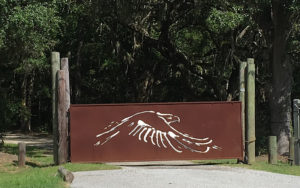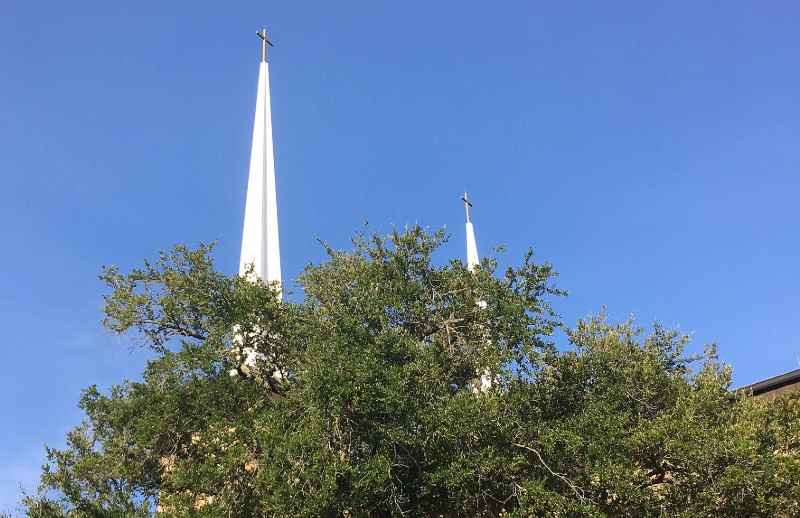Since we appear to be on a church theme today, here’s something new to the area skyline, but what is it? For a bonus, why is it new? (This may be kind of tough for people who live outside of the Lowcountry.) Send your guess to editor@charlestoncurrents.com. And don’t forget to include your name and the town in which you live.
Our previous Mystery Photo
 Our Aug. 5 mystery, “Rusty gate,” showed the gate to the Avian Conservation Center at The Center for Birds of Prey in Awendaw along U.S. Highway 17.
Our Aug. 5 mystery, “Rusty gate,” showed the gate to the Avian Conservation Center at The Center for Birds of Prey in Awendaw along U.S. Highway 17.
Hats off to the 21 readers (a record?) of Charleston Currents who nailed the photo identification: Chris Brooks, Judson Matthews and Carolyn Coker, all of Mount Pleasant; Kit Matthew, Jim McMahan, Carol Ann Smalley, Legare Clement, Joe Mendelsohn, Cydney Davis and Stephen Yetman, all of Charleston; George Graf of Palmyra, Va.; Bryce Donovan, Rebecca Manning Davis, Jeffrey Bassett and Scott Shoff, all of West Ashley; Grayson Kirk and Corinne Fullmer, both of North Charleston; Jay Altman of Columbia; and Rose Riordan of Pawleys Island; and Pat Deussing, a former Charleston resident who now lives in Apex, N.C. One reader didn’t identify her hometown.
Remember: To get credit for identifying the Mystery Photo, you have to send the town in which you live. More info on the Center, thanks to George Graf:
According to thecenterforbirdsofprey.org, “The Avian Conservation Center is designated in the USCG Area Contingency Plan as the official repository for oiled birds in South Carolina and maintains situational readiness in this crucial role. Constructed with a grant from U.S. Fish & Wildlife Service and South Carolina Department of Natural Resources, the Center’s combined use Avian Medical Center / S.C. Oiled Bird Treatment Facility was completed in October 2007 and is the only permanent avian treatment center of its kind on the Eastern seaboard.
“The facility is designed and equipped to provide the highest quality medical care available for injured birds of prey and shorebirds on a daily basis and affords the most efficient response possible in the event of a contaminant spill affecting native bird populations and their fragile breeding habitats along the South Carolina coast.”
- Send us a mystery: If you have a photo that you believe will stump readers, send it along (but make sure to tell us what it is because it may stump us too!) Send it along to editor@charlestoncurrents.com.




 We Can Do Better, South Carolina!
We Can Do Better, South Carolina!
























